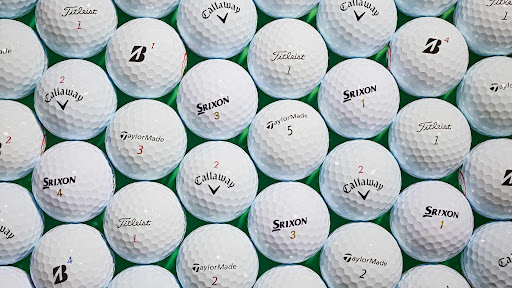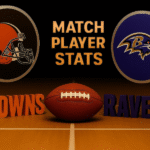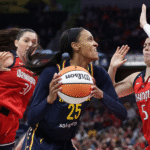Golf is more than just a game; it’s a passion that demands precision, skill, and the right equipment. Among all the gear in your bag, one essential item can make or break your performance: the golf ball. Choosing the best golf balls isn’t merely about brand loyalty or colorful designs. It’s about finding that perfect match for your swing style, playing conditions, and overall goals on the course.
Picture this: you’re standing on the tee box, feeling confident and ready to drive down an open fairway. But wait—what ball are you using? The right choice can enhance distance, improve accuracy, and elevate your entire game to new heights. Whether you’re a seasoned pro or just getting started in this incredible sport, understanding how to select your ideal golf ball will give you that competitive edge you’ve been looking for.
Let’s dive into what makes choosing the best golf balls such an important part of every golfer’s journey!
The Importance of Choosing the Right and Best Golf Balls
Choosing the right golf ball can significantly impact your performance on the course. Unlike other equipment, a golf ball interacts directly with your swing and affects how far it travels and its trajectory.
Different balls are designed for specific playing styles. For instance, some cater to those who prioritize distance while others focus on spin control around the greens. Selecting one that complements your skill set can lead to better scores and an overall enjoyable experience.
The feel of a ball is also crucial. You want something that feels good off the clubface, providing feedback as you strike it. This connection enhances confidence in your shots.
Moreover, weather conditions play a role too. A softer ball may perform better in chilly weather, while firmer options could excel during hot days. Understanding these elements helps you make informed decisions every time you tee off.
Factors to Consider When Choosing a Golf Ball
Selecting the right golf ball can significantly impact your game. Start by assessing your skill level. Beginners may benefit from more forgiving balls, while advanced players often prefer precision and control.
Next, consider the compression rating of a ball. Softer balls are easier to hit for those with slower swing speeds, while firmer options cater to faster swings for added distance.
The cover material also plays a role in performance. Surlyn covers offer durability and distance but lack spin compared to urethane covers favored by experienced golfers seeking better greenside control.
Don’t overlook the dimple pattern either. A deeper or more aerodynamic design can enhance lift and reduce drag, leading to longer drives.
Think about your playing conditions. Windy days might call for a different type of ball than calm weather scenarios. Each factor contributes uniquely to how you perform on the course.
Top Brands in the Market
When it comes to golf balls, a few brands consistently rise above the rest. Titleist is often regarded as the gold standard for both amateurs and professionals. Their Pro V1 model offers superior distance and unmatched feel.
Callaway also makes waves in this space with their Chrome Soft series. Known for its soft cover, it provides excellent spin control around the greens.
Bridgestone brings innovation through technology. Their fitting system helps golfers select the perfect ball based on swing speed and style.
Srixon deserves a mention too. With options like the Z-Star line, they cater to players who demand performance without sacrificing affordability.
TaylorMade’s TP5 has gained popularity thanks to its five-layer construction that enhances speed and control across all facets of play. Each brand caters to unique preferences, making it essential to explore your options carefully before choosing your next ball.
Performance and Quality Comparison of Different Golf Balls
When comparing performance and quality, it’s essential to consider how different golf balls respond during play. Premium models often feature multi-layer constructions that enhance distance and control. These balls typically offer a soft feel on impact, which many players prefer for greenside shots.
Conversely, lower-tier options may utilize simpler designs that sacrifice some advanced features for affordability. While they can still provide decent performance for beginners, they might lack the spin or trajectory control serious golfers seek.
The material also plays a crucial role in performance. Urethane covers are famous among skilled players due to their ability to generate spin and improve feedback. In contrast, ionomer-covered balls tend to be more durable but may not deliver the same level of responsiveness.
Testing various brands under real playing conditions is vital. This hands-on approach reveals how each ball interacts with your swing style and preferences over time.
Specialty Golf Balls for Specific Needs
Specialty golf balls cater to unique player needs. They offer tailored performance features that can significantly enhance your game.
For example, low-compression balls are designed for slower swing speeds. These provide extra distance and a softer feel. Players who struggle with distance might find this option beneficial.
Then there are the high-spin balls, perfect for those looking to improve their short games. With enhanced greenside control, these balls help you stop on a dime when chipping or pitching.
If you’re playing in wet conditions, consider all-weather golf balls. Their durability and high visibility allow for better performance even in challenging weather scenarios.
Women’s golf balls often have designs optimized for lighter swings while providing an appealing aesthetic. This ensures both style and substance on the course.
Exploring specialty options can unlock new levels of play tailored just for you.
Tips for Maximizing Your Game with the Right Golf Ball
To maximize your game with the right golf ball, start by analyzing your swing speed. Choosing a ball that matches your velocity can significantly affect distance and control.
Pay attention to compression ratings. A low-compression ball is ideal for slower swings, while high-compression balls benefit faster swings in terms of energy transfer.
Experiment with different cover materials. Urethane covers often offer better spin and feel around the greens compared to Surlyn covers, which are more durable but less responsive.
Consider weather conditions too. Softer balls perform better on dry days, whereas firmer options can cut through wind effectively when it’s breezy outside.
Practice regularly with your chosen ball. Familiarity breeds confidence and consistency in performance as you adapt to its unique characteristics over time.
Conclusion
Choosing the best golf balls can significantly influence your game. The right ball enhances distance, control, and spin, allowing you to play at your best. By understanding the various factors that impact performance—like compression, cover material, and feel—you’re better equipped to select a ball that suits your playing style.
Consider well-known brands; they often deliver quality and consistency that amateur and professional golfers alike appreciate. Whether you’re looking for maximum distance or optimal control around the greens, there’s a golf ball designed for you.
Specialty options are also available to meet specific needs. From low-compression balls for slower swings to high-spin models tailored for short games, variety offers something for everyone.
Don’t forget simple practices like testing different balls on the course or during practice sessions. Finding what feels right can make all the difference in achieving those perfect shots out on the green.
Investing time in selecting the best golf balls is an investment in yourself as a golfer. Elevate your game today by making informed choices about equipment—it’s one of the simplest ways to unleash your potential on the course.
Hi there! I’m Rose, an Admin and writer at https://matchplayerstat.org/, with over 30 years of experience. I love playing with words, covering international sports news, and diving into Football, NBA, and more sports topics. Join me on this writing journey, where I bring words to life in various exciting ways!





Leave a Reply